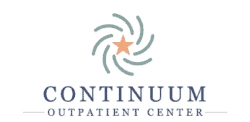What Is Binge Drinking?
Learn more about binge drinking, the signs & effects of binge drinking, and how to seek help for binge drinking disorders.
Written and medically reviewed by the clinical team at Ripple Ranch Recovery Center, including licensed therapists, addiction specialists, and medical professionals.
What Does Binge Drinking Mean?
Curbing unhealthy alcohol consumption is a vital part of recovery. Binge drinking is excessive or extreme drinking in a short period of time (within a two-hour timeframe). Clinically, binge drinking is described as a pattern of alcohol consumption that raises an individual’s blood alcohol concentration (BAC) to 0.08% and above.
According to the National Institute on Alcohol Abuse and Alcoholism, binge drinking corresponds to five or more drinks for men and four or more glasses for women in less than two hours. The clinical considerations for binge drinking vary based on sex, age, and body weight.
Fewer drinks within two hours can raise blood alcohol concentration to unhealthy levels in adolescents. For teenagers, three drinks or more for girls and 3-5 or more drinks for boys.1

Table of Contents
Learn More About Ripple Ranch Recovery Center
Our team is standing by to discuss your situation and options. Your call is fully confidential, and no obligation is required
The Definition of Alcoholism
Alcoholism is a substance abuse disorder characterized by compulsive, uncontrollable drinking and emotional and physical dependence on alcohol. It can also be referred to as alcohol dependency or alcohol use disorder.
Binge Drinking and Alcohol Use Disorder - The Difference
Is binge drinking alcoholism? No, it isn’t. The clinical difference between binge drinking and alcoholism is the absence of alcohol dependence in binge drinkers. Individuals with alcohol use disorders are heavily dependent on alcohol use and experience severe withdrawal symptoms when alcohol use is reduced or stopped.
However, an individual can binge drink without having an alcohol use disorder, and most people who binge drink do not show signs of alcohol use disorder. At the same time, an individual with an alcohol use disorder may misuse alcohol in other ways than binge drinking.
Excessive Drinking
Binge drinking is a pattern of excessive drinking on a particular occasion. This could be social drinking and peer pressure-influenced drinking episodes. Many binge drinkers can stay days, weeks, or months without taking alcohol.
However, alcoholism involves continuous daily use of alcohol over at least three months. Binge drinking is not alcoholism but is linked to the probability of obtaining more dangerous drinking patterns and developing alcohol dependence.2
Why Is Binge Drinking Dangerous?
Binge drinking and the general excessive consumption of alcohol can be very harmful to the human body. Excessive alcohol intake may lead to alcohol poisoning, which could be dangerous if not treated quickly. A sudden increase in blood alcohol concentration can lead to total loss of consciousness, and higher concentrations can result in death.3
Impairment of motor skills caused by binge drinking can cause unintentional incidents like falls, burns, and road traffic accidents. Binge drinking can affect an individual’s sense of judgment, leading to a higher inclination towards violence and harmful behavior. Binge drinking can also exasperate depressive feelings and emotional swings. Engaging in what is considered binge drinking can lead to hangovers that are highly uncomfortable and might take days to recover.
Is Occasional Binge Drinking Okay?
No form of binge drinking is healthy. Occasional binge drinking or binge drinking every day can cause long-lasting damage to the human body. What is considered binge drinking may vary based on gender, age, liver function, and body weight.
Continual drinking to the point of drunkenness is also considered binge drinking. Binge drinking is not a healthy pattern of alcohol consumption because it increases the risk of alcohol dependence.
In addition, drinking heavily on an empty stomach can cause spikes in blood alcohol levels. One binge drinking session alone can lead to severe consequences such as road traffic accidents, alcohol poisoning, loss of consciousness, and motor & cognitive impairment.4
How Common Is Binge Drinking?
The prevalence of binge drinking is determined by what is considered binge drinking. According to the Centers for Disease Control and Prevention (CDC), 1 in 6 US adults binge drink, and over 90% of US adults who drink excessively report binge drinking habits.5
Preteens and Teens
A National Survey on Drug Use and Health (NSUDH) study shows that 4% of preteens and teens aged 12 to 17 have been involved in binge drinking. This is mostly attributed to peer pressure binge drinking.6
Young Adults
Also, according to the NSUDH, 34.3% of young adults aged 18-25 engaged in binge drinking. Peer pressure, binge drinking, and drinking for social acceptance were the typical reasons for binge drinking among young adults. Men were also noted to be more likely to binge drink.
Older Adults
Studies show that 33% of adults between 26 and 49 binge drink. 17.1% of adults aged 50 and older and more than 10% of adults aged 65 and older reported binge drinking.
Women
Research shows that 18% of women of childbearing age (18-44) binge drink. Approximately 13% of women report binge drinking four times a month, consuming five drinks per binge. Comparatively, female high school students (15%) were more likely to binge drink than their male counterparts (13%).7
What Are the Signs of Binge Drinking?
Binge drinking is a drinking problem involving an unhealthy pattern of excessive alcohol consumption. People can identify a binge drinking disorder through several signs in conjunction with excessive alcohol use; these indications will be detailed below.
Frequent Drinking
This is characterized by binge drinking every day. This applies to an individual inability to reduce or stop drinking. Peer pressure binge drinking regularly or continuous drinking for an extended period.
Making Excuses
A significant sign of a binge drinking disorder is when an individual begins to make excuses to justify why they drink excessively. These excuses come in the wake of evident behavioral problems due to intoxication.
Risky behavior
Binge drinking disorders are associated with risky behaviors like driving under the influence and violent and suicidal behaviors.
Memory Lapses
Excessive alcohol use can inhibit short-term memory formation and lead to memory retention issues. It could be forgetting the events of the previous night, day, or a more extended period causing alcohol-related forgetfulness.
What Are the Effects of Binge Drinking?
The human body is exposed to higher toxicity levels during binge drinking episodes. This event can be extremely dangerous, and pose many risks to both the mind and body.
The effects of these binge drinking episodes are largely due to the inability of the body to metabolize large amounts of alcohol simultaneously. With time binge drinking may cause extensive damage to the liver. This can be long lasting, and in severe cases, even life threatening.
A healthy person can only effectively metabolize the equivalent of one standard drink of alcohol in an hour. The binge drinking effects could be short-term or long-term. These binge drinking symptoms will be detailed below.
Short-Term Effects of Binge Drinking
Short-term effects are observed soon after excessive alcohol consumption. Although recovery occurs, persistent occurrences can have lasting negatives.
Some of the short-term effects of binge drinking include:
- Sleepiness
- Depression
- Hostility
- Low blood pressure
- Slower breathing
Long-Term Effects
Persistent binge drinking can lead to alcohol use disorder and several long-term effects, including:
Having Poor Coping Skills
Coping skills are habits or skills formed over time to help an individual manage certain situations or stress levels. Coping skills can be healthy and helpful. However, alcohol dependence may have developed from regular binge drinking.
As a result, an individual begins to engage in binge drinking over time as a coping mechanism to numb pain or emotional stress, which can be highly unhealthy.
Experiencing Trauma(s)
Excessive alcohol consumption might temporarily act as a distraction from life problems. This dependence makes it harder to actively deal with stress and trauma to overcome or put an end to them. In the long run, binge drinking can increase some symptoms of Post-Traumatic Stress Disorder (PTSD) and make treatment less effective.
Low Educational Goals
Studies suggest that students with binge drinking disorders have poor school performance. These students are less likely to complete their work or attend classes. This poor attitude can interfere with achieving extensive academic goals.8
Depression and Anxiety
In the long term, binge drinking can cause problems to an individual’s mental health. This is because alcohol affects neurotransmitters in the brain. Episodes of binge drinking can disrupt brain chemistry, making bouts of mood disorders like anxiety and depression more likely.
What Are the Consequences of Binge Drinking?
Based on what is considered binge drinking, the consequences of binge drinking are plentiful and are due to certain factors. Consequences of binge drinking will be discussed further below.9
Binge Drinking Can Result in Violent Behavior
Alcohol consumption reduces self-control and alters mood and emotions. Alcohol use suppresses part of the in charge of cognitive, leading to higher incidences of anger and aggressive behaviors.
Binge Drinking Can Affect Brain Development
Recent studies have shown that teenage binge drinking may interrupt critical processes of brain development, increasing the probability of cognitive impairment and a higher risk of developing chronic alcohol use disorder.
Also, alcohol cognitive decline of the brain generates more quickly for women than men. Alcohol use, in general, can reduce the number of neurons in the brain.10
Chronic Diseases & Cancer Unintentional
Binge Drinking can increase the risk of cancers of the mouth, colon, liver, and esophagus. In women, alcohol consumption, even at low levels, is also associated with breast cancer. Binge drinking can lead to chronic diseases such as digestive problems, stroke, high blood pressure, and heart and liver disease.
Unintentional Injuries Caused from Binge Drinking
Binge drinking leads to accidental injuries. For example, drunk driving can lead to a motor vehicle crash. Sleepiness caused by binge drinking and coordination issues may lead to unintentional falls or burn injuries. This is common peer pressure binge drinking.

How to Stop Binge Drinking?
The only way to stop binge drinking is to personally adopt moderate drinking alcohol habits or stop alcohol intake altogether. A moderate drink is generally a maximum of two drinks daily for men and one for women. A standard drink is 12 ounces of beer, 1.5 ounces of distilled spirit, and five ounces of wine.
Below are various ways to overcome binge drinking:11
Medical Detoxification
This is a treatment period involving the controlled removal of substance abuse from systemic circulation. Most times, detoxification programs adopt the use of medications that can help mitigate withdrawal symptoms.
FDA-Approved Medications Such as Naltrexone, Disulfiram, and Acamprosate
Under a health service provider’s supervision, using approved medicines can help overcome binge drinking. For example, medications like naltrexone and acamprosate help to repress cravings for alcoholic beverages and reduce the urge to drink.
Behavioral Therapies
Many individuals are involved in binge drinking daily as a coping skill and means to deal with stress. The premise of CBT is to identify negative thoughts, behaviors, and emotions and replace them with positive ones. In behavioral therapy for a binge alcoholic, individuals learn how to stop binge drinking and avoid situations that make drinking more likely.
Outpatient Rehabilitation
Outpatient patient rehabilitation involves the treatment of binge drinking disorders without affecting the individual’s everyday life. Outpatient rehabilitation involves frequent visits to a treatment professional from time to time to support recovery and rehabilitation.
Inpatient Rehabilitation
Inpatient rehabilitation helps individuals focus entirely on recovering in a new, controlled environment. For inpatient rehabilitation, the individual remains within the health care or treatment facility for the period of treatment and recovery.
This intervention is usually necessary for advanced-stage substance use in learning how to overcome binge drinking or quit binge drinking.
12-Step Programs
The 12-step program is designed for people to assist one another in maintaining abstinence from alcohol. The 12-step program follows a set of official guidelines for recovery to help an individual to recover from out-of-control behaviors like binge drinking.
Seek Help from Ripple Ranch
At Ripple Ranch Recovery Center, we provide treatment that works for various conditions of addiction or dependence. We help counsel and rehabilitate patients who desperately want to know how to quit binge drinking. While carefully preventing relapses. Our services are provided in a comfortable environment to ensure the comfort of everyone who walks through our doors.
Reach Out
At Ripple Ranch Recovery Center, we provide treatment that works for various conditions of addiction or dependence. We help counsel and rehabilitate patients who desperately want to know how to quit binge drinking while carefully preventing relapses.
Our services are provided in a comfortable environment to ensure the comfort of everyone who walks through our doors.
Resources
- 1https://www.niaaa.nih.gov/publications/brochures-and-fact-sheets/binge-drinking
- 2https://www.ncbi.nlm.nih.gov/pmc/articles/PMC6899451/
- 3https://www.sciencedirect.com/topics/nursing-and-health-professions/alcohol-blood-level
- 4https://roadsafety.transport.nsw.gov.au/stayingsafe/alcoholdrugs/drinkdriving/bac/index.html
- 5https://www.cdc.gov/alcohol/fact-sheets/binge-drinking.htm
- 6https://www.samhsa.gov/data/sites/default/files/reports/rpt29394/NSDUHDetailedTabs2019/NSDUHDetTabsSect2pe2019.htm#tab2-18b
- 7 https://www.cdc.gov/alcohol/fact-sheets/womens-health.htm#:~:text=Approximately%2013%25%20of%20adult%20women,consuming%205%20drinks%20per%20binge.&text=About%2018%25%20of%20women%20of,%E2%80%9344%20years)%20binge%20drink.&text=In%202019%2C%20about%2032%25%20of,of%20male%20high%20school%20students
- 8 https://www.ncbi.nlm.nih.gov/pmc/articles/PMC5695901/
- 9 https://psycnet.apa.org/record/2019-05003-006
- 10 https://publications.aap.org/pediatrics/article/136/3/e718/61049/Binge-Drinking?autologincheck=redirected
- 11 https://www.mayoclinic.org/healthy-lifestyle/nutrition-and-healthy-eating/in-depth/alcohol/art-20044551#:~:text=Defining%20moderate,1.5%20fluid%20ounces%20(44%20milliliters)





